The Horrifying Appeal of Junji Ito
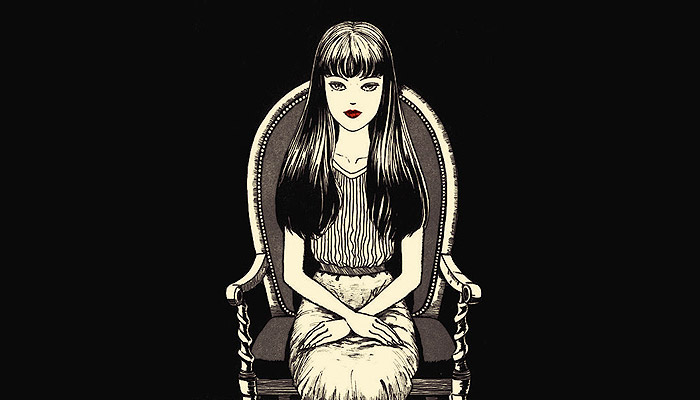
If you’re a fan of horror manga, then there is no doubt that you will have come across the works of Junji Ito, a prolific horror mangaka whose stories will leave you questioning and deeply unsettled.
The world of horror manga is vast, with many excellent titles to choose from. As a genre overall, there are many aspects that make horror appealing; the suspense and tension, the adrenaline that accompanies fear, and the social activity that it engenders. 1 Yet even within the scope of this appeal, Ito’s manga always stands out, edging above the rest in terms of creativity. So what is it that makes his work so unique and appealing? In order to try and answer this question, this article will examine two aspects of Ito’s manga; the visual aesthetic, and the narrative themes.
As a side note, this article will be focusing on Ito’s manga specifically, not the recent anime adaptation Junji Ito Collection (2018). Interestingly, the anime adaptation was criticised for falling short of the original works, partly due to an inability to replicate Ito’s incredibly detailed art style, and partly due to a lack of atmosphere. 2
Body Horror & Visceral Detail: Ito’s Aesthetic Appeal
Even a simple Google search for Junji Ito brings up pages upon pages of gory screenshots from his manga. Wading through the depths of these images, one thing is made immediately clear: Ito has a very distinct style, and it is horrifying.
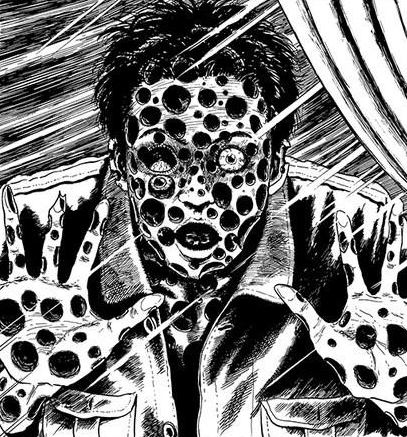
Being an author of manga, Ito’s artwork is almost entirely black and white, with colour only being used for cover pages. Obviously this is normal for manga, and does not prevent the conveyance of a wide range of moods and aesthetics. 3 Ito is no different, taking this lack of colour and using it to create eerie images, with characters that appear devoid of life. Human characters rendered by Ito tend to have white skin, with realistically detailed features. While one would think that this lends itself to humanistic, lifelike characters, this is not the case for Ito’s work. Of particular note is that, despite the intricate details drawn into their faces, Ito’s characters never have any blushing in their cheeks. This visual choice contrasts with that of most other manga, and gives the characters a pallid, lifeless look. This creates a sense of ‘inhumanity’, which is a common theme in Ito’s manga, and adds to the overall ambience of his stories.
Additionally, character faces tend to have minimal shading, other than for dramatic effect. The plain face provides an excellent contrast for details that are drawn on, and emphasises any unnatural elements that are present. In particular, the eyes tend to be drawn with more detail than the surrounding face. This allows fearful emotions and the insanity of the characters to stand out, even when other elements of the horror are not visible in a particular panel. 4
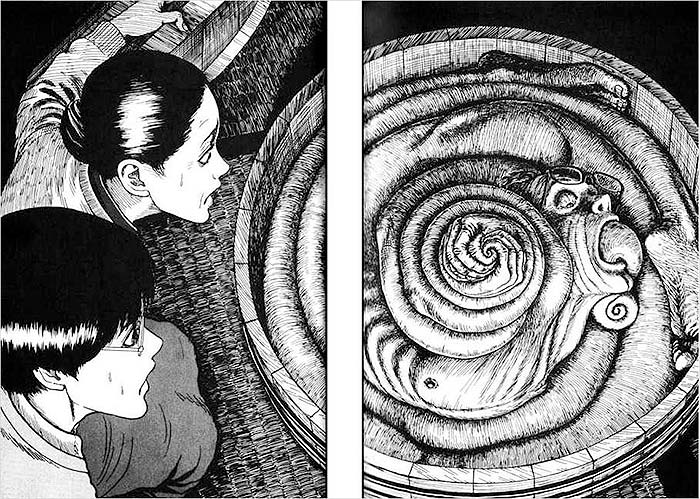
But not just the eyes – all of the detailing in Ito’s manga is incredibly intricate, which is another prominent feature of his art style. Alongside regular manga screentones (shading patterns), Ito makes heavy use of lines to demonstrate texture. All of the gory elements are shaded with a variety of lines to imply different squishy and drippy textures. It is this use of texture that makes much of Ito’s horror so unsettling – something that would normally be unimaginably disgusting and impossible is rendered in visceral detail, such that it almost can be imagined, felt, and experienced. Ito’s art style also makes use of strong contrast, both in the characters and their environment. The vivid usage of black and white helps create a sense of depth, which further adds to the eerie realism of his work.
Beyond the unique and vivid art style, the aesthetic of Ito’s manga also relies on its content. It might be a little uncomfortable if his art style was used to draw a cutesy, shoujo-style romance, but its downright horrifying when used to draw hideous insect-like creatures, deformed limbs, and twisted environments. There’s a solid blend of humanoid and non-humanoid monsters in Ito’s work, and both are suitably scary.
For human and humanoid characters, there’s a strong element of body horror, which refers to a sub-genre of horror involving the deforming and warping of the human body. 5 Most of Ito’s manga features this heavily; Uzumaki (1998-99) is a good example, with various chapters depicting limbs twisted beyond reason, characters slowly morphing into snails, and spirals drilled into characters’ faces. The Enigma of Amigara Fault (2002) is another popular work by Ito; the deformed, once-human character shown below provides a good example of the type of body horror common in Ito’s work.
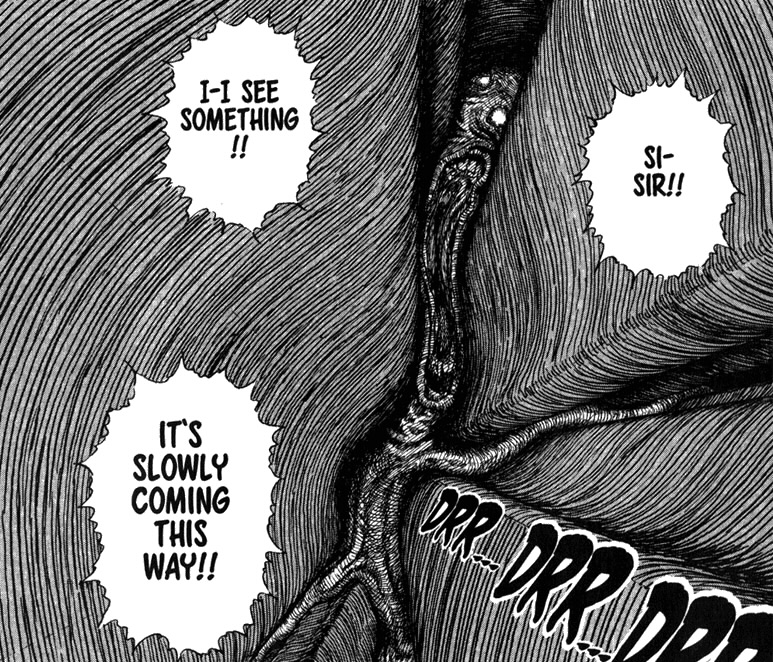
Body horror is nothing new, though, so why are Ito’s drawings so intriguing? Well for one, they’re unique. Classic western body horror often showcases humans transforming into monsters or zombies, or growing strange limbs. 6 Ito’s work contains that and much more; often, the body is recognisably human, but warped into something grotesque. Ito once worked as a dental technician, and makes full use of his prior expertise to create plausible images. 7 This element of being recognisable as human is important, as it makes the image much more feasible – and something that seems possible, no matter how irrational, is much more scary.
The non-humanoid monsters are less common, but still scary. One of Ito’s most popular titles, Gyo (2001-02), perfectly showcases his unique designs. Gyo features sea-dwelling creatures emerging from the depths of the ocean to invade land, propelled by insect-like legs. Such a design combines two common fears; insects and the deep sea. While humanoid horror is definitely the focus of Ito’s work, his unique and clever monster designs ensure that his non-humanoid horror leaves plenty of impact too.
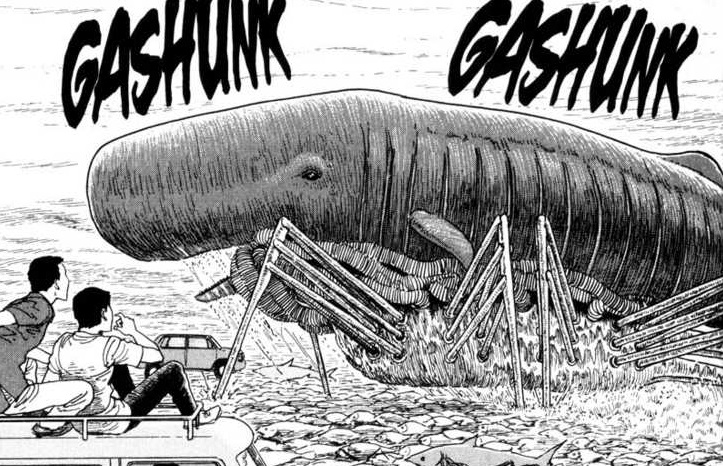
It is these intricately detailed visions of grotesque characters and scenarios that makes Ito’s work so visually unique. The images, while uncomfortable, are unlike anything else in horror, and that alone makes it difficult to look away.
Insanity & Inevitable Demise: Ito’s Thematic Engagement
It’s clear that the visual aesthetic of Ito’s manga plays an important role in its appeal. However, beyond aesthetic, Ito’s work also features deeply unnerving narrative themes.
Like all classic horror, there’s an underlying trend of monsters and the unnatural. The designs of these aspects have already been discussed, but it’s worth mentioning their conceptual appeal as well. For example, the fish monsters from Gyo are scary for two reasons. Firstly, their design is clever, tapping into two types of fear, as discussed above. Secondly, the creatures inspire a more practical type of fear; taking creatures that are usually removed from daily life (by virtue of being in the ocean), and giving them the means to intrude into what would normally be considered safe from them. This concept is expanded upon in Ito’s work, in which there are often no safe spaces, and characters are doomed to confront the horrors with little reprieve.
This ties in with a common theme of Ito’s manga, the idea of ‘beyond human’, which is explored in a variety of ways. For example, the human characters have a tendency to lose themselves to madness, whether due to a supernatural force or their own paranoia. In this sense, they shift beyond human rationality into something darker, and no longer human. Indeed, many of his stories begin with ordinary protagonists, but most eventually succumb to insanity and the pull of the supernatural. In doing this, the seemingly ordinary characters become part of the horror themselves; this is evident in works such as The Enigma of Amigara Fault. The concept of losing oneself, and consequently losing agency is a scary one, 8 and this links to further elements common in Ito’s stories.
Often in Ito’s stories, the driving forces behind the horrors that are occurring are non-human. Of course, this is normal for horror, however Ito tends to favour godlike forces, moving beyond the norm of spirits and zombies. Importantly, these deific entities are unstoppable. Unlike traditional horror, there’s no way to put the ghost to rest, or exorcise the demon. The entities are beyond human comprehension and therefore beyond human intervention. This means that there is a recurring sense of inevitable demise throughout Ito’s work, which again strengthens the sense of losing agency. These sinister forces feature prominently in works such as Uzumaki and Muma no Kikou (2018). Reading such stories, one can’t help but feel fear when empathising with the characters, who have no hope of escaping their gruesome fate, no matter how much they panic or struggle.

While deities might be the drivers behind Ito’s horror, the majority of the monsters themselves tend to take on a humanoid form. Again, the design elements of this choice have already been discussed, but there is also something conceptually unsettling about humanoid monsters. Like the designs, the more humanoid monsters are easier to imagine appearing in real life; and therefore more likely to prey upon one’s mind, long after the story is over. Characters such as Tomie from the popular Tomie (1987-2000) initially appear almost totally human. This reinforces a sense of tension that spills over into daily life; such a being might just exist, and never be found out, perhaps even amongst your own circle of friends.
These multiple explorations of the concept of humanity are a significant part of Ito’s manga, and part of what makes them so unique. Ito himself has stated in an interview;
“…for me it is the human who has the potential to make the most fear. Either physically, whether by his actions, or his psychic, there are plenty of parts of the human that can be scary. And my goal is to use the human to try to scare readers as much as possible.” 9
In addition to this theme, Ito’s work is easy to describe as bizarre. While many of his stories are thematically profound, they are also narratively eccentric, nonsensical, and irrational. Interestingly, this actually counteracts some of the other points made in this article: primarily, it pulls the stories back away from ‘uncannily human’, making it easier to distance oneself from them. However, these narratives are always creative, and importantly, incredibly unique. The intrigue of a story that’s never been told before does enough to pull the reader into Ito’s narrative, and this, combined with the other horror-esque elements of his manga enable enough suspension of disbelief to make them scary.
Lasting Impressions
So to answer the question of why Junji Ito’s manga is so unique and appealing; it all comes down to aesthetic and narrative.
Ito’s work makes use of a vividly detailed art style to depict cleverly designed monsters, and twisted humanoid body horror. These characters and creatures are then set against creatively bizarre narratives. Behind the stories are a backdrop of poignant themes; the nature of humanity, and a sense of inevitable doom brought about by relentless deities. It is these elements that combine to ensure that Ito’s stories are sufficiently horrifying, leaving a lasting impression that always has you coming back for more.
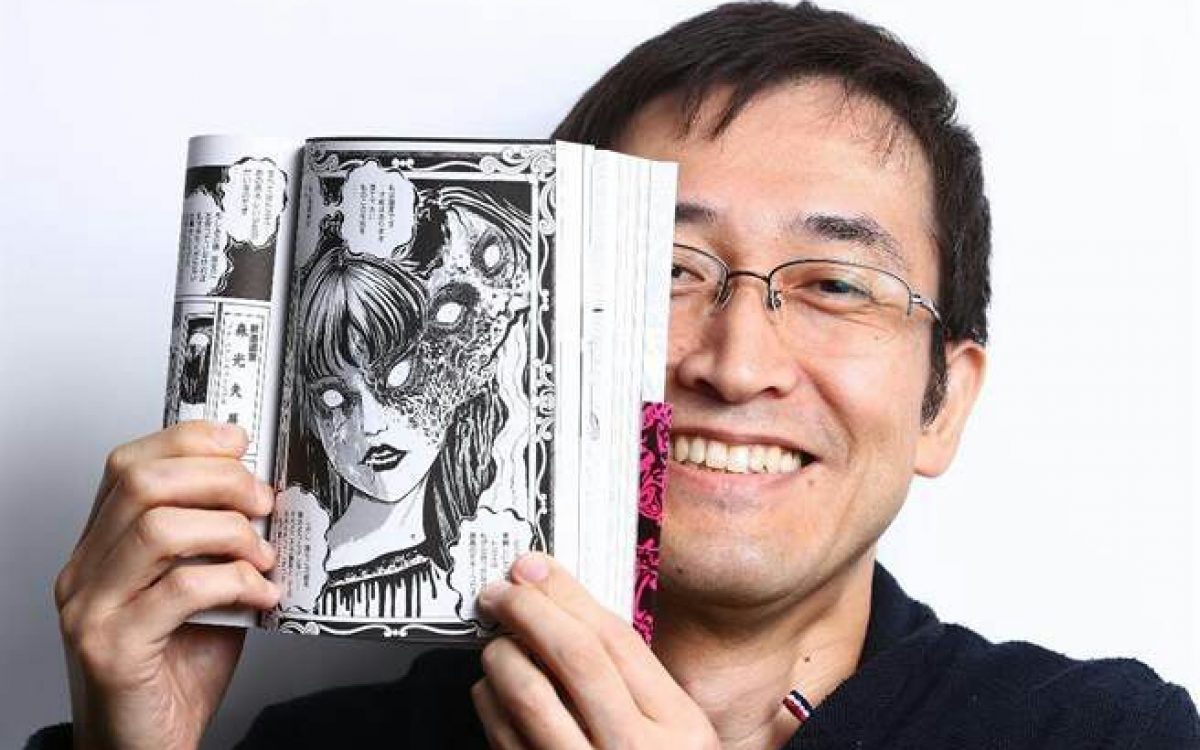
Works Cited
- Tudor, A., 1997, ‘Why horror? The peculiar pleasures of a popular genre’, Cultural studies, 11(3), pp. 443 – 463. ↩
- Samantha (Nerdyperspectiv), 2018, ‘A Horrific Disappointment (Junji Ito Collection Anime Review)’, A Nerdy Perspective [online], . ↩
- Adamson, J.L., 2008, ‘Genji in Graphic Form: The Tale of Genji in Manga, and the bond between Japan’s Past and Present in Popular Art’, [Doctoral dissertation], University of Cincinnati. ↩
- Stokes, 2018, ‘Junji Ito’s Eyes’, Overthinking It [online], <https://www.overthinkingit.com/2018/07/24/junji-itos-eyes/>. ↩
- Cruz, R.A.L., 2012, ‘Mutations and metamorphoses: Body horror is biological horror’, Journal of Popular Film and Television, 40(4), pp. 160 – 168. ↩
- Cruz, R.A.L., 2012, ‘Mutations and metamorphoses: Body horror is biological horror’, Journal of Popular Film and Television, 40(4), pp. 160 – 168. ↩
- Joan (meloku81), 2015, ‘Junji Ito: interview with a master of horror’, Nostroblog [online], <https://nostroblogs.wordpress.com/2015/02/11/junji-ito-entretien-avec-un-maitre-de-lhorreur/>. ↩
- Gurri, A., 2014, ‘The Aesthetic of the Macabre: A Critical Look at Junji Ito’s Horror of the Bizarre’, Sweet Talk [online], <https://sweettalkconversation.com/2014/11/16/the-aesthetic-of-the-macabre-a-critical-look-at-junji-itos-horror-of-the-bizarre/>. ↩
- Joan (meloku81), 2015, ‘Junji Ito: interview with a master of horror’, Nostroblog [online], <https://nostroblogs.wordpress.com/2015/02/11/junji-ito-entretien-avec-un-maitre-de-lhorreur/>. ↩
What do you think? Leave a comment.
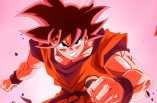


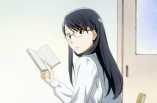
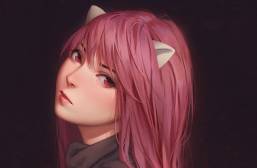
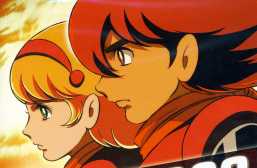
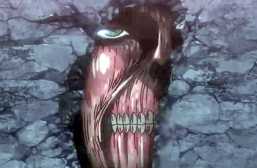
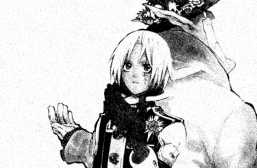
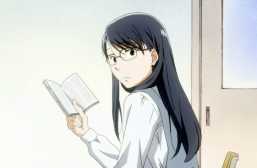
Thank you so much for this fabulous work! I am a big fan of Ito’s work, and I have always found his work to be both fascinating and inexplicably romantic to me. This post definitely helped me to clear some wonderings I have had in much better phrases. Really love it!
You are most welcome, I’m glad you enjoyed the read!
I think that’s how a lot of people feel; the manga are always enjoyable but then if you try to think about it deeper it can seem weird, given how grotesque some of the imagery is. So I’m glad I could help clarify things!
I read spiral in one sitting and it left me feeling dizzy & kind of empty. There was no explanation, or an ending really, but that was the beauty of it. The unknown. It made me fall in love with his work. And now I have a shelf full of manga.
That’s a bold way to go about reading something like that! But I agree, it ended, but there was no closure really, just the sense that it might happen once again… I do like how his manga can inspire that feeling!
You know how actual nightmares are usually nonsensical, but feel so real sometimes? I get the same feeling from Ito. Even in these grotesque images I see parts and pieces that feel so real.
And the main horror for me comes from times when I accidentally realize whats gonna happen next and Im afraid to turn the page. You know in Uzumaki there was a lady who decided to get rid of all the spirals in her body? She did, but then you see this brain chart in the doctors office, nothing yet happened, but suddenly you REALIZE there is a f-king spiral inside our head, and you just watch as a catastrophe unfolds in front of you.
Just brilliant!
I totally agree, and I think that’s partly due to his art style.
But yes, I think his stories too are very cleverly crafted. You know something’s a good text when even if you know what’s going to happen, it still scares you.
I used to binge Junji Ito’s works many years ago, i need to read them again.
It’s never a bad time to reread them!
I never liked Junji Ito works. Maybe it’s because I’m just not a fan of visual horror or body horror that shows in his work… I felt more disgusted than terrified while reading some of his stories.
That’s fair enough, I do think that enjoyment of his work is predicated on a baseline enjoyment of body horror. If that’s not there then its definitely difficult to get past the icky elements of his art…
I agree with Malia. I don’t find Junji’s work scary or terrifying at all which is a shame because it feels like I’m missing out.
With that being said, I like your take on him!
It’s definitely not for everyone, but thankfully there’s plenty of types of horror out there, something for everyone I’m sure!
His imagery is impressive in the way, that it strongly disturbs me, yet I can hardly stop looking at them. Several times a week I just open one of my Ito stories just to look at some certain frame again and stare at it for good several minutes.
Ooh, I know what you mean. Some of the images really freak me out, and yet I still find myself reading his manga!
When I was still reading Uzumaki, I went out for dinner. As I lifted the food off of my plate I realised that the plate had a spiral pattern on it. Scared the life out of me! Ito’s work really gets into your head.
Yeah, after my friend and I read it, sometimes we’d draw spirals on each other’s books just to freak each other out! His works sure leave a lasting impression!
I’m a fully grown adult who has seen some disturbing stuff, but nothing like Junji Ito’s had made me physically react. The first and only manga I’ve read from him was The Spiral Obsession, and let me tell you, the image of the dad dead and contorted into a spiral shape was already too much for me to bear and I involuntarily shielded my eyes.
I immediately deleted it from my phone and I couldn’t sleep because the image was still imprinted in my memory, but the most disturbing part of the entire thing was that I had the horrible urge to look at it again.
A few months later, I finally had the courage to read through it and finish both parts, cause I’m stubborn af. Slowly, the manga got more painfull and hard to read. The second I finished it I spaced myself as far as possible from my phone and was too disturbed to even close my eyes. I’m pretty sure I have a phobia of spirals now.
It’s proof that his manga is really effective! And you’re right, I can never look at spirals the same way now…
I think ultimately what makes his work so terrifying and also what draws us in as observers is the quality of his horror to be implicitly incomprehensible & terrifying simultaneously. It cannot be explained and yet it needs no explanation. His work truly embodies the cosmic horror genre.
I agree! There’s something very scary about ‘the unexplainable beyond’, I think because as people we rely a lot on knowledge and explanations to make things familiar. If something can’t be explained it remains unknown, and thus potentially dangerous! And that’s pretty scary, if only in a biological sense.
Thank you for the excellent analysis. I’ve never seen something so inspiringly disturbing yet so captivating. I can’t wait to get my hands on some of these novels!!
Thank you for reading! I’m glad you liked the article, and I’m pleased it inspired some to get into Junji Ito. I hope you won’t be disappointed!
My best memories of Junji Ito’s work is reading it while suffering chemo-induced insomnia. No matter how awful and grotesque my body became, no matter how twisted and disgusted I felt when I looked in the mirror, Ito could always give me something worse.
That’s a perspective I’ve never heard, but an excellent point! It’s funny to think how this type of horror could even help people in different ways.
What I love about Ito’s work is his ability to take the most mundane or harmless things and make it absolutely terrifying. Think about it, who would be scared of a spiral or a chair for that matter? I also love his artwork. He truly is the master of unknown horror.
Indeed, and I think that makes it more scary too, since they’re so everyday, you end up seeing them everywhere after reading!
I really do enjoy Junji Ito’s work. The fact that he drives characters insane and although they apply logic to all situations, such as in Tomie when the kids think it was either dream, or make up other excuses, there’s no way to solve or comprehend what is going on. He also seems to go into phobia’s of others. I own Tomie and Shiver, and I’m definitely going to purchase many more!
It’s a pretty common theme I think, and certainly a scary one!
I actually find his work funny when I read the manga idk but I just love and get butterflies in my stomach seeing his characters get fucked and the details and monsters he create 😍 maybe I need to watch the anime to get more spooked. Don’t get me wrong, I really admire the effort and details he put in his work as I mentioned. I also enjoy and love to create dense and horror like details in my drawings as well and I’m thinking of creating similar horror stories as him but I’m sure it won’t be as good and creative but I would love to try to come up with something spooky and creepy 😁
Well there’s no wrong way to enjoy horror! Lots of people laugh at it too, as a way of appreciation. I think in an interview Ito said he does incorporate some comedy into his works (especially when referring to the anime), so you might find a similar vibe if you watch it!
And I’m sure you’ll come up with something great!
I came across an uzumaki book in my local library a few years ago, it was horrifying and very graphic. I loved it! I’ve been trying to find out what horror style it was, thankfully now I know.
I remember seeing it at a bookshop and being horrified, but it sure was a worthwhile read!
Cheers, lovely read. I think what makes Junji Ito so unique isn’t just his artstyle or storys but the way he uses the pages. on 1 page he creates already a scene that makes you and the protagonist feel uncomfortable and scared, but he doesn’t reveal for what or what it looks like, until YOU as the reader turn page. This is just a genius way of using the traditional way of Manga reading to create a increasing tension within the mind of the reader.
Thank you!
And that’s true, forcing the reader to want to know what happens next, despite knowing it will be something awful is quite clever!
More films need to be made around Ito’s work. Seeing his art come to life on screen (the right way) would most likely be terrifying.
Maybe there will be in the future? It’s interesting though, the anime was criticised quite heavily, so I’d be interested to see how it could be adapted differently.
Black and White makes it visually compelling.
It sure does!
Ive never come across anything as disturbing and intriguing as Junji Ito’s work.. I was seeing spirals everywhere, a theme in one of his stories, for days after reading it.. I thought I was losing my mind.
I think that’s the beauty of his work. Since it’s based around something so everyday, the reader themself becomes infected and worried even after putting the manga down.
i really do love his stories, they’re really great. thinking of all the possibilities that could happen anywhere in real life, it’s truly horrifying. but i know it’s just a story… but the unknown is the unknown after all, so who knows anyways. we can’t decide on what’s real or fake up front without official evidence, same even if we think that it’s impossible or possible, like tell me how and why. and i do understand that we can be insignificant and small to the universe, no one is special or a chosen one, because no one can truly decide that. there’s no path for you or prophecy, because it’s all made up by human beings, same with good or evil and love or hate. it’s like there’s no good or evil, only Predator or Prey. what’s bigger or powerful only matters in this universe. it’s truly horrifying to know, but who knows anyways. also but, it can be logical that way, but there are still multiple possibilities… after all, this story IS CREATED BY A HUMAN BEING. so yea, basically.
It’s just different to usual manga, it’s got that grit that we seem to like from things like Akira, and it’s got a very significant unapologetic style.
The obsession to detail, the hopelessness and loss of control. A lot of qualities about Junji Ito’s work that I could summarize. But for me personally, I think it has to be the strong sense of realism to his stories.
The first time I got into his work a few years ago, I read about The Enigma of Amigara Fault, and I had a nightmare where me and my female best friend switched places with the lead characters. I don’t know why but that solidified me on how terrifying that story alone was. I got to know the people, see the world and envision it in my head so vividly and believed in it, half because it took place somewhere real, and half because of the detail Junji Ito put into the design of each scene. Everything looked and felt real. From the faces, to the world, to the shapes of the holes and the creatures inside of them at the end. And the limb stretching… just ever so slightly… I still feel uneasy thinking about it. Then I moved on to Uzumaki. Boy, was that a trip. I had to take occasional pauses because my head hurt and my stomach turned a bit. And I swore I thought I was looking at images from my nightmares when I was younger. The fluid twisting and morphing of flesh, bone, and earth, looked just like my dreams, only happening consciously and scene by scene.
There’s no mistaking his style. How real everything is. Every story he makes will pull you in. And maybe you’ll be one of the characters and feel the terror I did. They’re that good.
My dad just brought me a Junji Ito manga and it’s totally worth it but at the same time it really creeps me out.
My favorite of his stories was Hellstar Remina. I just love cosmic horror. Normally i hear that humanity is so insignificant to the universe, but Remina arrives with an actual fascination of earth and how it reacts to its own demise. It could have eaten earth as fast as the other planets, but it waited and watched as humanity panicked.
Junji Ito’s work is surrealist. What allures people is his sense of imagination. Symbolism can also help people understand Ito’s art.
I am kinda horrified, especially with those pics
I honestly had PTSD after reading Uzumaki I was scared of spirals for months and i saw them everywhere. I read the mangas over 10 years ago and just reading this article is bringing back the old feeling.
Firstly, I love this article. Ito’s work give me the official creeps. I love it so much that I hate some of his works. Tomie, for example, gives me ews. I hate Tomie because he made it to be like this: completely hateful. He just KNOWS how to make things work. He can bring that anxiety and nonsensical fear into your life. When I finished Uzumaki, I was cometely taken by some spiral paranoia. I love some of his works because it’s new. I never saw something like that.
They finally got some of Ito’s work in stock at my library. Never read something so fast in my life.
Sometimes I think about the twisted and distorted end of the hole in the enigma amigara fault, it terrified me beucsse I know what the human would look like right there, and I felt panic and fear when I thought about it when trying to sleep.
Uzumaki was in my town’s library. I read it once, when I was 14. Im 29 now, and I still remember it.
I’m about halfway through “Tomie”, and his work, both illustrations, and narratives are both chilling and at the same time fascinating. very cool stuff.
i really love the story of junji ito…my favorite one is the Whispering Women it is like…. I’m the girl named mayumi…
i like the enigma of the (i forgot the rest) but i was so scared going to sleep.
Im still having nightmares about The Hanging Blimp.
Great article. LIke you said, I think what draws his fans to Ito’s work besides his great artwork is the way he portrays horror through taking the familiar and twisting it to be unfamiliar. I don’t think there’s many panels he’s created that don’t evoke a sense of discomfort or being disturbed. He’s easily one of my favorite working manga authors and artists in general.
This is fascinating to me and I am awestruck that I’ve never heard of this man or style of work before. I love horror films and niche/macabre literature and I’ve never seen anything quite like this. It is reminiscent of a HR Giger’s art, but is far more accessible and narrative. I love it and really enjoyed this article! Great work, very well researched!
That’s horrifying.
My first introduction to Junji Ito was Uzumaki, and man did it creep me out. The illustrations and the story just leap out of the pages, not to mention the periodic misery that us readers get when our hopes our dashed as to the protagonist’s survival. Ito’s work is amazing and Uzumaki has only spurred me to read more of his works.
I didn’t even notice the lack of blush on Junji Ito’s characters or how plain their faces were. Upon reading the article that does add to the overall horror. The art style definitely gave me goosebumps when reading Ito’s works.
A very interesting analysis, this. I’m not familiar with this author (though I’ve read other works that touch on similar themes), but it seems, from the way you describe his work, like it’s a particularly good example of how humans can be the scariest monsters around, except visualized using surreal manga imagery.
Ito’s Uzumaki is the only manga I’ve read to completion so far. He definitely is a unique voice in the world of horror.
Ito’s style is so unique and visually striking that the first time you see his work, you’re instantly curious (not to mention terrified) to know more about what you’re looking at. What fascinates me most is how Ito uses the sharp contrast of black and white to create richly detailed, visceral artwork. The rugged look to everything just screams “horror.”
What I like about Ito’s style is is just how beautiful it is, despite being so dark and visceral. This juxtaposition is something that I find so very interesting and enjoyable.
While I do have some reservations about Ito’s narrative structuring, I do think that he’s brilliant when he’s at his best. Good piece.
Wow, this is so cool, I am going to now research more about Junji Ito work because this is very cool.
Hey there, Andi, absolutely loved your article! You truly did a deep-dive into Ito’s themes and the visual aspects of his works. I really enjoyed your take on things. As a long-time fan of Junji Ito myself, you still shed light on a few things or made them a little more clear to me.
Especially your discussion of his visual aspects and elements was quite an eye-opener (no pun intended). I always felt his work was very unique and very unnerving, but you did a great job analyzing why that’s the case.
I recently also wrote a long article on Junji Ito, but it’s more a list of my favorite works and why I enjoyed them so much. In case you’re interested, you can check it out here:
https://rehnwriter.com/book-recommendations/the-40-best-stories-by-japans-horror-master-junji-ito/
Again, thank you for your great work! This was truly one of the best articles i read about Junji Ito.
Thank you for your kind words! I’m glad you liked the article 🙂
I liked your article too (I can’t believe he has so many stories!).
His art style is also wonderfully utilized for comedic effect. While this article touched on the hypothetical of him making a cutesy manga in that style, he technically did with his Cat Diary. Using his unsettling style to create something so mundane and sweet is as jarring as it is hilarious.
Junji Ito is one of the most influential artists, not only in Japanese manga, but in the United States as well.
Hello Andi! I can’t believe I suggested this topic like 2 years ago and did not figure out it was published! I must have been totally blind not to see such a great piece of writing on the prince of horror! I enjoyed reading your article a lot. Ito’s narrative and art style are indeed quiet exceptional and appealing. Thank you for sharing your ideas on it!
“Tomie” captivated me from the very first page.
For those who haven’t already, “The Engima of Amigara Fault” is one of Ito’s most interesting works – a very strong blend of his disturbing artistry, and and compelling narrative.
This is perfect for spooky season!
I read uzumaki a while ago and spirals still make me anxious. Junji Ito is a master of horror